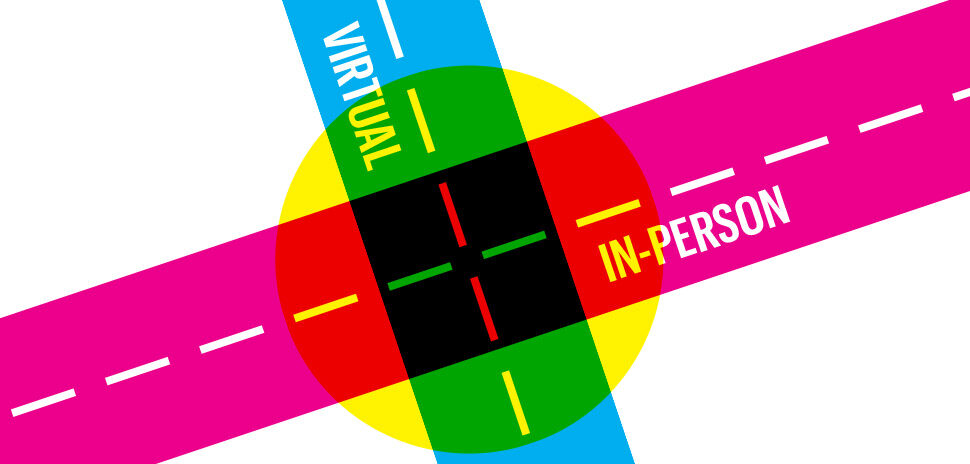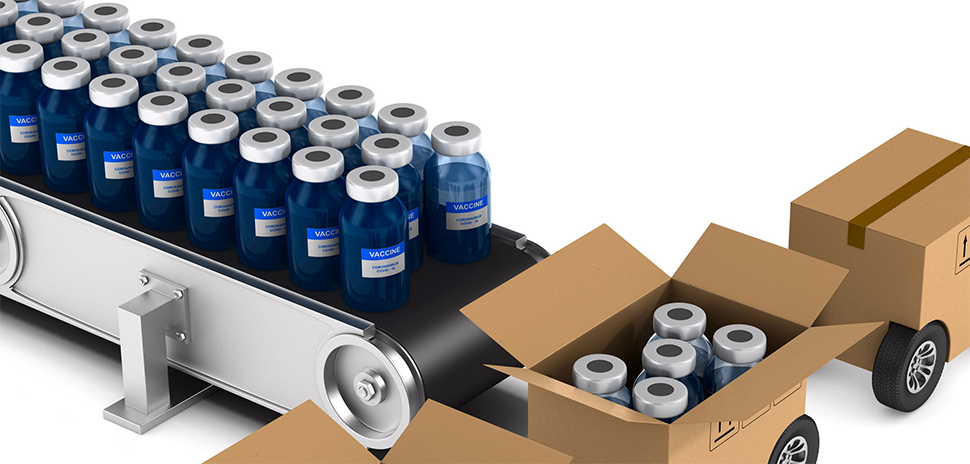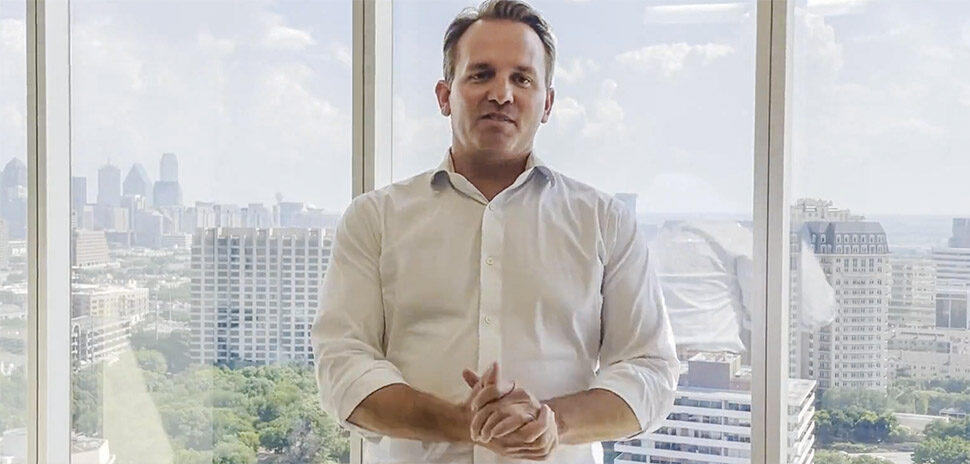As the COVID pandemic continues to derail business travel plans, it hasn’t stopped Dallas’ Michael Potts from visiting with clients and business associates across the globe in their offices, conference rooms, living rooms, etc.
Potts and others at his company—M2 Studio—work with architects, landscape architects, interior designers, engineers, construction companies, and developers to visualize their projects.
But rather than building models out of wood and paper, he renders plans in the interactive, 3D digital realm, allowing him to present them remotely, using interactive, extended reality (XR) technology. In the Q&A below, Potts—a self-described holographic architect—discusses how the technologies work for his business, and how they might apply to others.
Dallas Innovates: How has this technology been used in some of your projects, and how do you think it affects how people think about things, especially in the age of COVID-19?
Michael Potts (MP): We have been producing VR content for built projects for about 14 years, but over the past four to five years, we have started to see greater adoption and acceptance of this technology. We’ve built AR and VR experiences for Klyde Warren Park in downtown Dallas, a Texas Health Resources hospital expansion in Fort Worth, a rooftop pool deck for a downtown Austin hotel, and a dozen other projects around the country for businesses in the architecture, engineering, and construction industries.
These projects are typically used for promoting, fundraising, or raising awareness of the new development. But that was pre-coronavirus. Over the past several months, the tools have quickly evolved and become more attainable. The technology is much more user friendly and has more to offer to companies wishing to expand beyond the typical video call experience.
The main difference, I believe, between these video calls and AR avatar meetings is participant engagement and the feeling of presence in your real-life space. The human brain is very flexible in its ability to accept certain scenarios. Within a few moments of starting your avatar meeting, your brain starts to accept that these photorealistic avatars are close enough to reality to start to interact with them as if they are other people in your space. You can hand digital models, sketches, and photos to these digital avatars, just like you would hand an object to someone in the real world. The implications of this technology for businesses across the world is really unprecedented. It’s an exciting time to be working in this field, especially after watching it mature for 25 years. I really believe that this is going to change the world in a better way.
DI: How expensive/difficult is it to get set up with augmented or virtual reality?
MP: Prices for models I’d recommend range from about $400 to more than $3,000. If I were getting started in VR, I would go with the Oculus Quest, which has a 64GB model for $399. Setup is a snap (because it’s virtual, you’ll need to connect to WiFi), and the value is really hard to beat. For AR, your best three options are HoloLens 2 for $3,500, Magic Leap for $2,295, and later this fall, the Nreal Light for $499. The HoloLens 2 is the most advanced solution, but carries the higher price tag. I really like the Nreal Light for ease of use and cost, and it just won a major award for best wearable device.
For VR software, there are lots of games in the Oculus Store that you can try and purchase while wearing the glasses. For AR, there are a host of solutions, but not all systems are supported by each platform. You will want to check to see if the software you want to use supports the headset you are planning to purchase. For business use, I am using two software platforms for multi-user experiences. The Wild for VR immersive visualization and design development is $195 per month per account. For the AR side and business collaboration, I use Spatial, which I have been beta testing since February and is free for the rest of the year. Both of these tools have special pricing for enterprise customers.
DI: What kind of business or organization would see a benefit from using the technology?
MP: To me, it’s clear that AR remote collaboration is the future of business communication.
I don’t want to say that it would benefit all businesses, but in all honesty, I think the answer is most businesses would see some benefit, especially during COVID-19. Even after this pandemic and all of its problems have subsided, there will still be numerous advantages to using this technology for your company or organization.
An executive from a Fortune 100 company told me a few years back her company believed once this technology gains acceptance, it could save them as much as $100 million per year in executive travel expenses. I think the savings to most large companies is definitely there.
Let’s consider the other benefits:
Reduced travel means improved health and safety of your teams, better life/work balance of your employees who previously spent a good amount of time traveling to and from work, and traveling from city to city for face-to-face meetings. Cutting business travel is a win, win, win; less travel and more effective meetings mean more efficient use of employee time benefiting the company. It also means employees can spend more quality time with their family or their lifestyle, and less travel is good for the environment.
Let’s say you have a meeting planned with multiple team members in another city. Zoom calls will not be enough because you want to connect better to the people in the meeting. The avatar meeting gives an experience like you are really in the room without the need to travel. You can see an individual’s body language, hand movements, you can see if they are making eye contact or paying attention to you. You can hand models, point on a map, or draw on a virtual whiteboard, just like you were in the same room.
Best of all from the business perspective is that this avatar meeting only took 20-30 minutes of your time and not a full day, or several days. The company benefits from the savings of your travel costs. But what about the hours you have free because you didn’t have to travel? What is the value if you have hundreds or thousands of employees that normally travel?
[Video: M2 Studio production. Source image: Courtesy of Spatial.]
A version of this story first appeared on the Dallas Regional Chamber site. Dallas Innovates is a collaboration of D Magazine Partners and the Dallas Regional Chamber.
The story was updated on July 19, 2020 at 3:46 p.m. with additional information about AR/VR collaboration tool Spatial.
![]()
Get on the list.
Dallas Innovates, every day.
Sign up to keep your eye on what’s new and next in Dallas-Fort Worth, every day.










![M2 Studio's Michael Potts uses Spatial for augmented reality and business collaboration. The AR/VR tool can turn any room into a 3D workspace, according to Spatial. [Image: Spatial.io via M2 Studio]](https://s24806.pcdn.co/wp-content/uploads/2020/06/DRC-M2Studio-feature-970.jpg)























































